
- Browse by Topic
- Magazine & Index
- For Members
- Business Directory
- Join / Renew
Select Page

Putting on the Pressure: Pros and Cons of P210s
Posted by Bill Cox | May 28, 2020 | Columns and Opinions
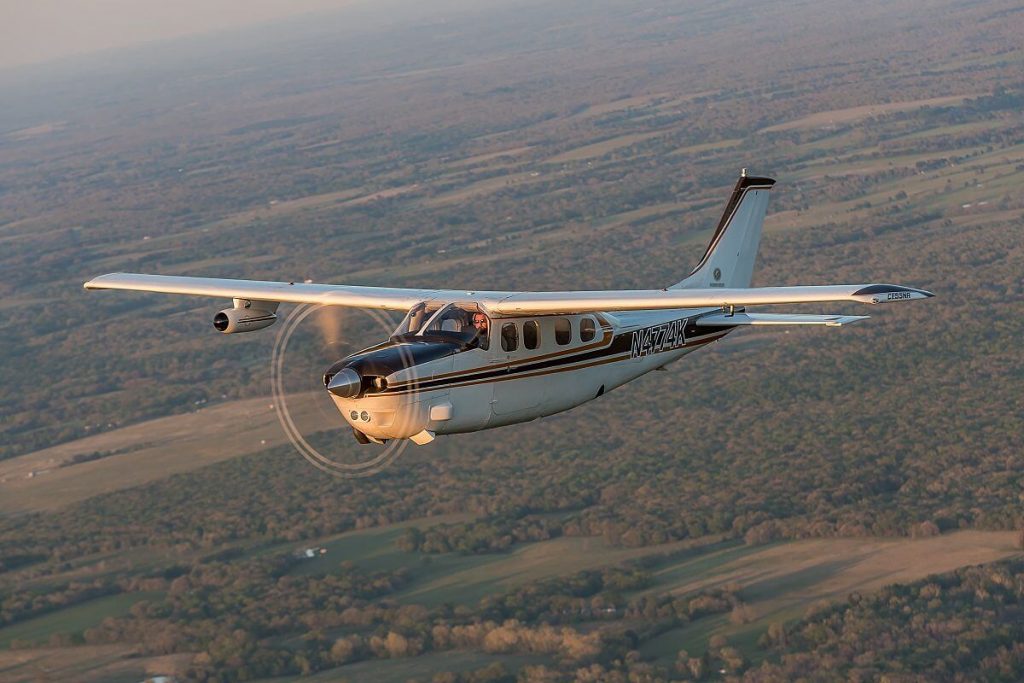
By Bill Cox
It’s true that turbocharging introduces a whole new dimension to flying, but pressurization is the ultimate extension of a blower under the bonnet.
A turbo allows the pilot to select cruise altitudes high up into the lower flight levels. Pressurization makes the turbo more functional and adds another level of comfort and convenience.
In the case of the P210, the pressurization system is borrowed from Cessna’s earlier model 337P Skymaster, a sometimes beloved, sometimes not centerline thrust twin that offered multi-engine safety without the disadvantage of engines mounted out on the wings.
The system pumped up the cabin by 3.37 psi, allowing a cabin altitude of 10,000 feet when the airplane was cruising at 20,000 feet.
While this did introduce a greater level of complexity, it also made a dramatic improvement to the airplane’s comfort and safety. A pressurized version of the Centurion could climb directly to FL200 without the need for pilot and passengers to strap on oxygen masks above 12,500 feet.
Read Bill’s article on the Cessna 210 in the June 2019 issue of Cessna Owner magazine.
Have a website login already? Log in and start reading now.
Never created a website login before? Find your Customer Number (it’s on your mailing label) and register here.
Still have questions? Contact us here.
About The Author
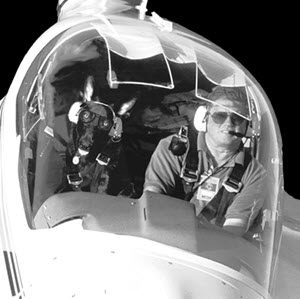
Bill Cox took his first flight in a Piper J-3 Cub in 1953 and has logged some 15,000 hours in 311 different types of aircraft since. He has authored more than 2,200 magazine articles and was the on-camera host of the 1980s TV series “ ABC’s Wide World of Flying.” Bill is currently rated Commercial/Multi/Instrument/Seaplane/Glider/Helicopter. He can be contacted via email at [email protected]. Learn About Bill's Book Here
Related Posts
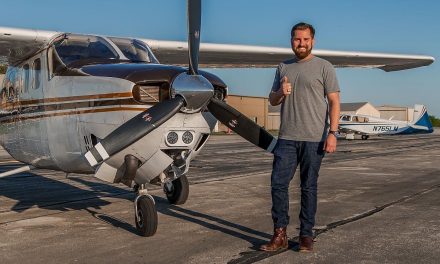
Owner’s Perspective: Pressurized Cessna 210
May 28, 2020
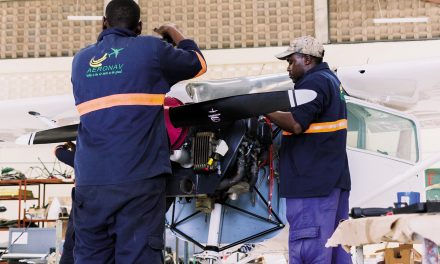
How to Pick an A&P
July 16, 2021
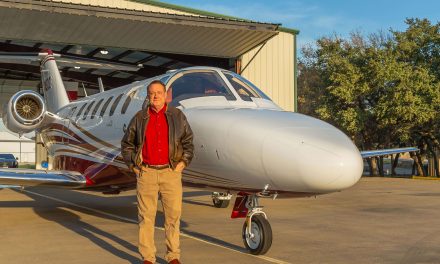
Owner’s Perspective: Cessna Citation CJ2
September 2, 2020
Veteran Pilots Give Pre-Delivery Flight Tips
November 7, 2022
Box A Zone 1
Box b zone 2, box c zone 3, box d zone 4, free digital magazine & newsletters.

Click HERE to choose your FREE download: 172 Owners Guide, 182 Owners Guide, or Digital Magazine.
You have successfully subscribed.
- AVwebFlash Current Issue
- AVwebFlash Archives
- Aviation Consumer
- Aviation Safety
- IFR Refresher
- Business & Military
- eVTOLs/Urban Mobility
- Experimentals
- Spaceflight
- Unmanned Vehicles
- Who’s Who
- Video of the Week
- Adventure Flying
- AVWeb Classics
- CEO of the Cockpit
- Eye of Experience
- From The CFI
- Leading Edge
- Pelican’s Perch
- The Pilot’s Lounge
- Brainteasers
- Company Profile
- Flying Media Offers
- Question of the Week
- Reader Mail
- Short Final
- This Month In Aviation Consumer Magazine
- This Month In IFR Magazine
- Farnborough
- HAI Heli Expo
- Social Flight
- Sun ‘N Fun
- Women in Aviation
- Accidents/NTSB
- Aeromedical
- FAA and Regs
- Flight Planning
- Flight Schools
- Flight Tracking
- Flight Training
- Flight Universities
- Instrument Flight
- Learn to Fly
- Probable Cause
- Proficiency
- Risk Management
- Accessories and Consummables
- Aircraft Upgrades
- Equipment Reviews
- Maintenance
- Refurb of the Month
- The Savvy Aviator
- Tires/Brakes
- Used Aircraft Guide Digest
- Electronic Flight Bag
- Engine Monitors
- Portable Nav/Comm
- Specifications
- Register Now
- Customer Service
- Reset Password

- Sign up for AVweb Flash
- Read AVweb Flash
- Aviation Publications
- Contact AVweb
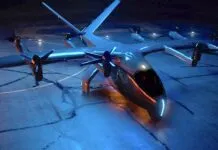
Archer Reports Success With Battery-Pack Drop Testing
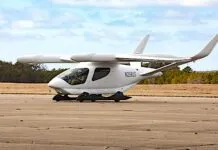
Beta Technologies Alia CTOL Impresses At Cape Cod Debut
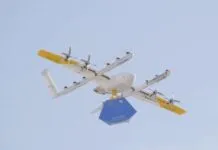
DoT Inspector General To Audit FAA Efforts On Drone Integration
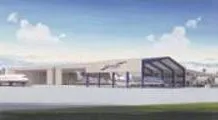
Signature Aviation And BETA Technologies Electrify East Coast Airports

Going Boeing

Enforcement Action Against Wing Walking Business Goes Over The Top

A Different Way To Look At IMC
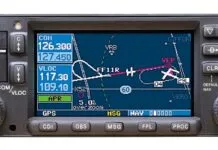
GNS 430 Hysteria-25 Years Later

Putting A Face To The Perils Of Space Flight
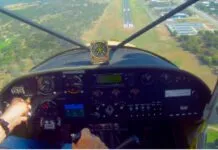
Picture Of The Week: April 5, 2024

Best Of The Web: Alaska Ice Landing

Picture Of The Week: March 29, 2024

New T-Shirt Line Launched By Aeroswag
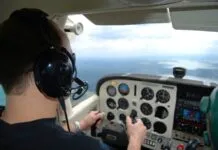
Short Final: More Information, Please

Short Final: Good Guidance
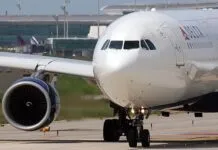
Delta Captain Celebrates Retirement With Chartered Airbus Flight To Hawaii
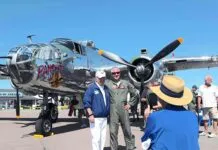
Sun ‘n Fun Will Host Warbirds As Part Of Victory’s Arsenal…

NTSB Releases Documents Behind Texas Warbirds Collision

Three Finalists Selected As Potential Air Races Host

Snowbirds Return To AirVenture

Able Flight Strengthens Collegiate Aviation Presence Through SIU Carbondale Partnership

Two Off-Airport Pedestrians Injured By Aircraft Attempting To Land

NTSB Warns Pilots Of Dust Devil Dangers

Mental Health Committee Says Pilots Shouldn’t Have To Report ‘Talk Therapy’…

FAA Readies For PAFI Unleaded Fuel Tests
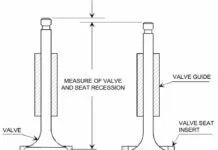
Mike Busch To Probe Unleaded Fuel Valve Issues
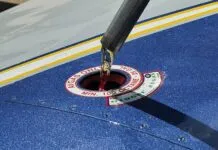
Environmental Group Says California FBOs Will Be Able To Continue Selling…
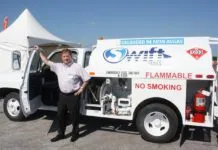
Swift Fuels Raps Environmentalists’ ‘Ultimatum’ On Unleaded Fuel

Booking Tool Allows Passengers To Opt Out Of Boeing 737 MAX…
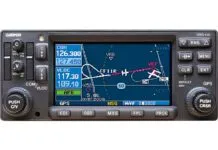
Garmin’s GNS 430/530 Sunset Takes Another Step

Honeywell Shores Up Supply Chain With Olathe Plant Expansion
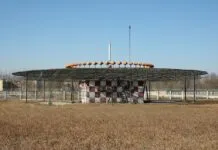

FAA Advises Using Analog NAVAIDS In Spoofing Areas
- features_old
Turbonormalized P210: Fast, Efficient, Quieter
Vitatoe aviation hangs an easy-breathing, cool-running, turbonormalized io-550 on a p210, giving it a strong rate of climb and turbine speed at altitude..
Vitatoe Aviation’s turbonormalized P210 conversion may just have turned the Cessna P210 into the airplane it should have been all along. I’ve liked the P210 ever since I first flew it in 1979. It’s fast, carries a good load, has honest handling and the pressurization spoiled me.
However, the first part of any flight always seemed to be a battle between a decent rate of climb and engine cooling. When going fast enough to keep CHTs out of the stratosphere, the rate of climb was usually around 400 or 500 FPM. It took a lot of fuel and time to get to altitude. This mod fixes those problems and turns the airplane into a 200-knot cruiser.
Successful entrepreneur, former drag-racer and self-described gear head, Larry Vitatoe faced the heat-versus-rate-of-climb conundrum with his P210—he liked everything about the airplane except for the constant battle with cooling during the climb and the need to sometimes step-climb on hot days.
About four years ago, when it was time to overhaul the TSIO-520 up front, Vitatoe decided to act on his idea of getting an STC for a turbonormalized IO-550P in the P (and T) 210. He reasoned that by installing the high compression ratio IO-550 and using the existing turbocharger but only using it to turbonormalize the engine—maintain ambient sea level manifold pressure up to altitude—rather than ground boost the engine—boost the manifold pressure above ambient—the engine would run cooler and more efficiently than the TSIO-520 in the T and P210.
After doing his homework, which included spending time with Tornado Alley Turbo’s turbonormalizing gurus George Braly and Tim Roehl, Vitatoe set his team to work.
The Installation
Over the course of two-and-a-half years, they came up with an installation that mated with the existing Inconel exhaust system used by Cessna. They used dual intercoolers to keep induction air temperatures to not more than 135 degrees F, moved the altitude-compensating fuel pump to a location where it was easily accessible and adjusting fuel pressure would no longer be a four-hour job. They then put the induction system on top of the engine where it would be in a cooler operating environment and used the throttle body from a TSIO-550 engine.
As installed in the modified T and P210, 31 inches of manifold pressure generates 310 HP on the turbonormalized IO-550 as opposed to the 36.5 inches required on the TSIO-520, allowing cooler running at high power settings. An incidental benefit is that the IO-550 has a 2000-hour TBO as opposed to 1400 or 1600 hours for the TSIO-520s used in the stock P210s.
The existing McCauley prop could not meet vibration requirements in the new installation. Hartzell, “just up the road from us,” as Vitatoe put it, was willing to get involved and came up with two scimitar props, one 80 inches in diameter, the other 82 inches. Both props cut takeoff noise by 2.5 decibels, which doesn’t seem like much, but makes a noticeable difference for a 210 in an increasingly noise-sensitive world.
Atlantic Aero’s six-point engine mount, similar to what Cessna used for the last model of the 210, the R proved to reduce vibration and was chosen for the Vitatoe mod.
The STC for the conversion for the P210N, T210L, M and N was received in the summer of 2011. Vitatoe performs the changes at its facility at Pickaway County Airport, Circleville, Ohio. While I was there, the hangar was full of airplanes being converted. I was told there is a short waiting list. The conversion requires 14-16 weeks. Thus far, the P210 has proven to be the overwhelming favorite for the mod, with only one T210 having undergone the engine swap.
The basic price of the upgrade is $117,760 for the P210N or $120,560 for the T210L, M or N, which includes a remanufactured TCM IO-550-P6B engine—TCM accepts a TSIO-520 for core credit—with a single 100-amp alternator (dual 60-amp alternators are an option at extra cost), choice of 80- or 82-inch Hartzell prop, six-point engine mount, pressurized magnetos, overhauled prop governor, overhauled turbocharger, overhauled boost pressure relief valve, dual intercoolers, TCM balanced upper deck fuel injection system, TCM altitude compensating fuel pump, new baffles and associated hardware for the installation.
The mod involves a number of other changes, such as some rework of the cowling and nose bowls, and the tail pipe exit area of the lower cowling.
The STC requires that the airplane have an engine monitoring system that displays and records engine data. Most coming in for the mod already have an acceptable engine monitor. If not, Vitatoe Aviation is an AuRACLE dealer.
There are additional options available—the engine will handle dual alternators, dual vacuum pumps and air conditioning. Vitatoe can install electric or fluid prop deicing and some owners specify a new, rather than remanufactured, engine. For those owners who desire paint, interior and/or avionics when doing the engine upgrade, Vitatoe will help coordinate the work with shops that specialize in those areas.
Vitatoe noted that no two airplanes his shop has looked at are the same. Every one has gone through some changes since new, from avionics through auxiliary fuel tanks to TKS deicing systems. It is one reason that every airplane is weighed as a part of the engine mod—Vitatoe went on to say that every airplane has also weighed more than its owner thought, by as much as 100 pounds.
The engine change adds from 7 to 35 pounds to the airplane, depending on the equipment on the original airplane. The airplane I flew had a post-mod empty weight of 2771 pounds, which Vitatoe said made it one of the heaviest as it had a number of options, including air conditioning and a radar pod. With a 4016-pound maximum ramp weight, its useful load is 1245 pounds. Loaded, with full standard tanks—89 gallons usable, 534 pounds—711 pounds can be carried in the cabin, three 200 pounders plus over 100 pounds of stuff.
The STC provides a supplement to the POH, however, it is primarily operational. From a performance standpoint, it simply states that the modified airplane will perform as well or better on takeoff and climb than the standard airplane. I was to find out that takeoff and climb performance has improved.
For cruise, the maximum allowable horsepower is 262, which is 75% of the maximum capacity of the engine, 350 HP, although it is derated to 310 HP max continuous in this application. 362 HP is obtained at 30 inches MP, 2500 RPM and 17.5 GPH fuel flow LOP. In our flight, I saw a cruise of 202 knots at 16,000 feet at that power setting. That gave a range, with VFR reserves, of just over 700 NM. Not bad for a pressurized, known icing, radar-equipped, piston single.
There is an interesting limitation on the installation—at power settings above 26 inches MP, fuel flow must be either greater than 30 GPH or less than 17.6 GPH.
Vitatoe told us that when he started working on the conversion, his target was a 200-knot cruise at FL200. My numbers showed that he exceeded his goal.
Preflighting the airplane is conventional. A person familiar with P210s will notice that the cowling has been cleaned up, a non-icing NACA scoop is used for induction air and the prop bears the distinctive look of the Hartzell scimitar design.
Inside, the only difference that shows immediately is that the high side of the auxiliary fuel pump switch is no longer spring-loaded to off. Vitatoe explained that if the engine-driven fuel pump gives up the ghost, it’s necessary to turn on the high side of the aux pump. Having to physically hold the switch on made no sense, thus the spring was removed.
I’ve flown various IO-550 conversions and have found them to be remarkably smooth—Vitatoe’s P210 installation proved to be no exception. It was dead smooth at all power settings from idle up. Even running well lean of peak (LOP), it simply never ran rough, although I should probably credit the GAMIs for the LOP smoothness.
Takeoff comes after a minimum of 100 degrees F oil temperature and 200 degrees F CHTs are reached. At full throttle, the automatic waste gate control sets the manifold pressure and fuel flow to 31 inches and 37 GPH, although there may be a small overrun on the first takeoff of the day. There is a pop-off valve that takes care of any significant overboost.
Takeoff and Climb
The airplane was loaded to 200 pounds below gross weight on a day that was 15 degrees F below standard temperature. Takeoff acceleration was slightly better than I would expect in an unmodified P210, with more right rudder required. More rudder trim was required when transitioning to climb, cruise and descent than in an unmodified P210.
All power controls are moved full forward at the beginning of the takeoff roll and left there until leveling off in cruise. I did not have to touch anything until leveling off at FL220, which, in my opinion, is how power management should be—there are enough demands on the pilot’s attention, particularly when departing from a terminal area.
Other than a greater need for rudder, handling is pure Cessna P210—well-behaved and harmonized in all axes throughout the envelope, but heavy. The airplane is utterly predictable and will handle impressive crosswinds. The controls are effective—it just requires effort to displace them. That solidity and predictability may be one of the reasons the airplane has long been popular.
Performance
Once the gear and flaps were up, a cruise climb of 120 knots was set. I did not see less than 900 FPM all the way to FL220, even though the airplane picked up about a quarter inch of rime ice between 6000 and 8000 feet. The time to FL220 was just over 20 minutes. In my experience, an unmodified P210 would take twice that time.
The hottest CHT I saw in the climb was 320 degrees F, and the hottest inlet temperature I observed was 90 degrees F.
At FL220, I made cruise speed in runs in opposite directions. In an airplane with a radar pod and a light layer of rime ice, cowl flaps closed and power set to 326 HP LOP (30 inches MP, 17.3 GPH and 2500 RPM), the speed settled at 152 knots indicated, 212 knots true. TIT was 1540 degrees F; the hottest cylinder was 358 degrees F. Vitatoe said that when the OAT is above standard, the CHTs will run at what he considers to be max—380 degrees F—and it may be necessary to partially open the cowl flaps.
At this altitude, the TN P210 is within 10 knots of being as fast as the advertised speed of the Silver Eagle turboprop mod of the P210 while burning 7 fewer GPH.
At 16,000 feet, with 326 HP set using the same MP, RPM and fuel flow, I observed a TAS of 202 knots, the hottest CHT was 316 degrees and TIT was 1544.
I also did a check at 8000 feet, as it is often asserted that turbos are a liability below 10,000 feet. With the lower exhaust backpressure of turbonormalizing versus ground boosting, I am not convinced that cruising at lower altitudes hurts economy. My observations, again at 262 HP, were a TAS of 175 knots at 17.4 GPH and a highest CHT of 297.
While higher is generally more efficient, even with a 37 GPH fuel burn in the climb, lower isn’t going to eat you up with fuel bills, especially when there are strong headwinds up high.
It looks like Vitatoe Aviation has hit a long ball in converting the P210 to a turbonormalized IO-550. The TN IO-550 has been a success in the Bonanza and Cirrus—it looks as if this can continue the trend.
With prices of P210Ns under $200,000, the idea of being able to have a pressurized single that cooks along at turbine speeds in the flight levels for $300,000 is attractive.
Rick Durden is the senior editor of Aviation Consumer magazine and the author of The Thinking Pilot’s Flight Manual or, How to Survive Flying Little Airplanes and Have a Ball Doing It, Vol. I .
This article originally appeared in the May 2013 issue of Aviation Consumer magazine .
For more great content like this, subscribe to Aviation Consumer .
LEAVE A REPLY Cancel reply
Log in or Register to leave a comment
AVweb Insider
Featured video.
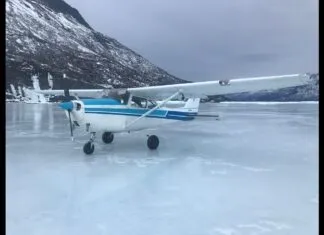
- Privacy Policy
- Accessories
- Maintenance
- Used Aircraft Guide
- Industry News
- Free Newsletter
- Digital Issues
- Reset Password
- Customer Service
- Free Enewsletter
- Pay My Bill

Silver Eagle P210: A Turbine That Works
The numbers on o&ns turbine conversion pencil out because the rolls royce 250-b17f/2 is exceptionally light and not as thirsty as other turbines..
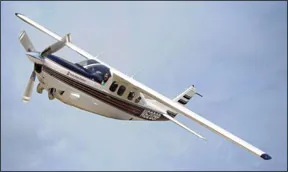
The turbine engine is impossibly alluring. No thrashing pistons, grinding cams, clicking valves-just far fewer exquisitely balanced parts all whirring in the same direction. But turbines are expensive and they guzzle fuel, which means that with very few exceptions, they dont work well in small airplanes. One of those exceptions is O&N Aircrafts re-engining of the Cessna P210 and 210 with the Rolls Royce (formerly Allison) 250-B17F/2 turbine engine, a powerplant thats been
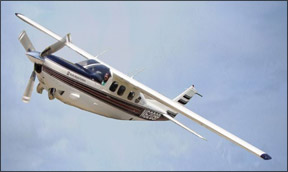
around awhile and one that Rolls is trying to evolve into more GA applications with the advent of a new version, the RR500. Mooney expressed interest in that engine, but thus far, the project hasnt materialized and it may not for the same reasons that turbines have stumbled before: difficult-to-manage fuel specifics and small airframes with no place to put the fuel. Meanwhile, more than 100 of O&Ns Silver Eagle-modified 210s are flying and we recently visited the companys shop in Factoryville, Pennsylvania, to evaluate the mod and do a flight trial. No sugar coating here: The Silver Eagle, at $980,000 complete, is not a cheap mod. On the other hand, its superbly engineered, performs well and has just enough range to make it practical. The 250 engine has proven reliable and relatively easy to maintain. In fact, given its weight and power output, it has significant advantages over the competing engine, Pratts PT6. History This mod is no latecomer, having been perking along since about 1992, when industry veteran Myron Olson made it a signature product of the O&N shop, whose history dates back to 1986. O&N is a general maintenance shop with expertise in the Cessna 210 and P210 models, but with a line of mods including extended-range fuel tanks, control modifications for Cessnas and nacelle wing tanks for Navajos and Senecas. In order to make turboprop conversions work in light singles, the engine has to meet a narrow set of parameters with regard to weight and fuel consumption. There were only two practical choices, Pratt & Whitneys PT6 and the then-Allison 250, which eventually evolved into the 495-HP 250-B17F/2 when Rolls got hold of it. For the Silver Eagle, its derated to 450 HP, but thats still a ton of thrust for an airplane that originally had a 310-HP Continental TSIO-520, which some owners complain was never quite up to the task of high-altitude pressurized flight. The turbine engine was originally developed in the 1960s by Allison as a helicopter powerplant and it found a ready market for that purpose. Like the PT6, its a
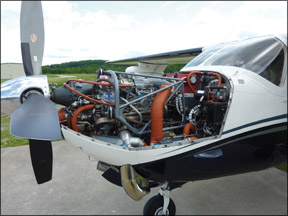
reverse airflow engine, meaning the incoming air makes a 180-degree turn into the combustion section, where it expands to drive a turbine wheel connected to a stub shaft that then drives the prop gearbox. The 250 series is valued for its small size and incredibly light weight-about 125 pounds dry, plus another 75 for related hardware for a total nose weight of just over 200 pounds. The lightest of the PT6s weigh nearly twice as much. Of course, the weight cuts both ways, since the 250 is lighter than the gasoline engine it replaces, batteries and other gear have to remain forward. Rolls has evolved the engine to produce better power and efficiency through an improved turbine and burner can, giving as much as 15 percent more power at altitude. That used to be an added cost option, but its now standard. Most of the Silver Eagle conversions have been performed on P210s, which was manufactured from 1978 to 1986. Of late, to expand the market, Olson told us O&N is starting to convert T210s and normally aspirated models as well. Obviously, these dont have pressurization, so onboard oxygen is a must. That said, the Silver Eagle does its best in the high teens to low 20s. It doesnt need to get to airline altitudes for speed and economy. Max altitude for the converted P210 is 23,000 feet, but higher with supplemental oxygen. At 23,000, it can maintain a 12,000-foot cabin. Whats Involved
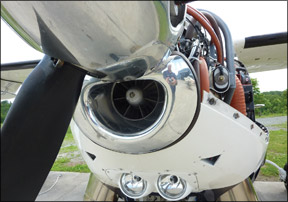
The Silver Eagle mod requires at least three months to complete and when you consider the list of work, its easy to see why. O&N will take an owners 210 or find one on the market and perform the conversion, which is essentially a remanufacture. When we visited the shop a couple of years ago, a 210 was stripped to its underwear and getting new wiring, a landing gear rebuild, air conditioning, a new interior and fresh paint. It gets new heavier vertical and horizontal stab mounts, too, plus reconditioned windows, new glareshield lighting and soundproofing. As required by cert standards, the elevator gets twin trim tabs. The power quadrant is modified, of course, to replace the throttle/mixture/prop with the traditional turboprop power and condition levers. State-of-the-art avionics are options and lately, says Olson, O&N has been installing Garmin G600 suites with an S-TEC 55X autopilot. The version we flew had the Chelton FlightLogic system. TKS deicing is an available add-on and so are conventional boots driven by a 400-series pump. The engine has plenty of bleed air to blow up the cabin, but cant spare much for deicing. Because their fuel specifics arent quite as stingy as piston engines, turbines require more fuel…a lot more fuel. Heres where the 250s light weight comes into favorable play. With the Continental shelved in place of the Rolls, the 210s empty weight decreases by 140 pounds, allowing total tankage-including wingtip add ons and a baggage compartment aux-to total 148 gallons. Most owners, says O&N, opt for both the wingtip and baggage tanks, Allowing for ground idle, climb and descent, thats about 5.5 hours of endurance. That still leaves enough room in the baggage compartment for a moderate amount of stuff. In the airplane we flew, the empty weight was 2699 pounds against a gross of 4016 pounds for a useful load of 1317
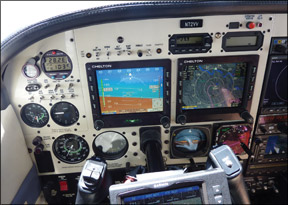
pounds. Full of gas, its two people and light bags. At cruise speeds typically in the 200-knot range, O&N claims a still-air range of about 1000 miles, which the airplane will do under ideal temperature conditions with a comfortable reserve. But like most turbines, it gives up performance to high and hot, so with wind considered, 800 miles with comfortable reserves might be a better all- around average, unless the wind is pushing. Flying It While 310 HP is hardly a piddling amount of power, 450 HP is just a whole hell of a lot better. And it shows immediately on takeoff. When we lined up on Seamans Airports 2500-foot runway, it felt awfully short for something as heavy as a 210. With the power lever forward, however, it was obvious after 50 feet of takeoff roll, 2500 feet is a cakewalk. O&N claims a 600-foot takeoff and although we didnt measure it, well accept that on face value. Max climb at gross weight is claimed at 2200 FPM and although we didnt see that, the 210 had no trouble loafing along at 1500 FPM, so the climb into the flight levels is typically going to be under 20 minutes, which is a must for milking max range out of the airplane. Although its not sharply fuel limited, it also doesnt have fuel to spare so on long-range flights, pilots want unrestricted climbs to milk the best
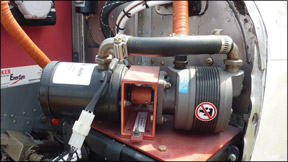
range out the available fuel. By piston standards, initial takeoff and climb fuel flows are higher, but not insanely so. Olson told us he figures on 32 GPH for the first hour, then 21 to 23 for every hour thereafter. Its not practical to draw the power back to 17 GPH as youd do in a piston aircraft by running lean of peak, so cruise flows are higher. As youd expect from the higher power, cruise speeds are higher, too, when compared to the Continental-powered P210. Owners tell us they fly the piston version at 175 to 190 knots true, but the Silver Eagle bores along on 210 to 215 knots. The piston version is often described as under-engined, but youd never say that about the Silver Eagle. It has power to spare at any altitude. But it is temperature limited. For our trial flight with O&Ns Carl Reynolds, we arrived at 17,500 feet in 14 minutes at a cruise climb of 130 knots. The OAT was -5 degrees C, which is ISA +14. Fuel flow was 23 GPH for 180 knots TAS. On a standard day or a colder than standard day, says Reynolds, the airspeed would be as much as 10 knots higher. The engines performance gradient relative to temperature is greater than the true airspeed gain with altitude. Winter cruise speeds in the 220s are doable. Cabin noise is whisper quiet, with no detectable
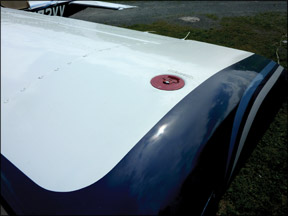
vibration. If you didnt want to wear headsets, you wouldnt need to. For as fast as it climbs, the Silver Eagle can come down just as fast. Chop the power to flight idle, point the nose over and down you go at 1500 FPM. Not enough? Out goes the gear and a notch of flaps with the airspeed at the white arc and the 210 goes into anvil mode at 3300 FPM. A piston engine might or might not tolerate this abuse, but for a turbine, its just another day at the office. As far as ease of flight, theres not much to think about-just push the throttle forward and pull it back and keep tabs on the fuel. If there was any surprise about the Silver Eagle, we would say landing it was the eye opener. Not to put too blunt a point on it, but the 210 is not the lightest pup in the litter when it comes to handling. Its moderately stiff in roll and almost truck-like in pitch. You can one-hand the flare, but it takes effort. It therefore feels like the airplane should approach at a high speed-its not a jet-like 120 knots, but Reynolds recommended 90 knots on final. Once again, confronted with Seamans 2500-foot narrow runway, it feels like an
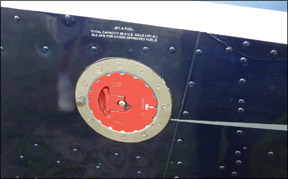
overrun is just two or three knots of excess speed away. Ah, but theres a method to this madness. Fly short final at 90 knots, slow it toward 80 over the numbers and plop it on the runway. Its a bit graceless, but when you pull the prop past the detent into Beta and stop in 500 feet, you get over that. Its an absolute agita reducer to have the reverse thrust available. Between it and amount of takeoff power available, the Silver Eagle can get into and out of runways where the Super Cubs are parked. Conclusion Unless our Berkshire Hathaway stocks pay off beyond our wildest dreams, were unlikely to be able to afford a mod like the Silver Eagle. But we nonetheless concede a fondness for it. Its a nice match of the right size powerplant to an airframe thats not made anymore and that slots it into a unique niche. Further, O&N is old school, meaning Myron Olson comes from the days when a mod business considered customers as long-term clients, not just one-off opportunities for a sale. Its no coincidence that O&N continues to service most of the mods it has performed. It has also picked up support for the products of one of its competitors, the Tradewind Tubines Bonanzas, which also use the Allison turboprop. When we visited O&N in June, the company was completing work on yet another conversion-turbines for the popular Cessna 340 pressurized twin. Well take a look at that mod in a future issue.
RELATED ARTICLES MORE FROM AUTHOR
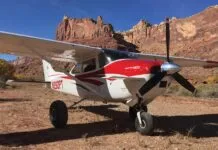
Four-Place STOL: Look Beyond Macho
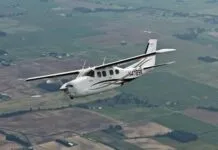
Cessna Pressurized 210
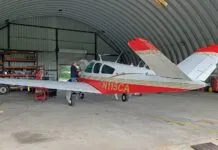
Fly It for Less: Slow Down, Partner Up
Featured video.
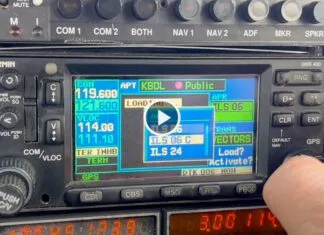
Garmin GNS 430: Throwaway or Keeper?
- Online Account Activation
- Privacy Policy
- Aircraft For Sale
- Manufacturers
- CESSNA P210N Centurion II
What feature of our site is most important to you?
- Aircraft for sale
- Operating Costs
- Performance Specs
- Used Aircraft Values
- Aircraft Sales and Accident History
1978 - 1983 CESSNA P210N Centurion II
Log in to compare." data-placement="left" data-activity="click on '+ add to compare cessna p210n centurion ii'" > view comparison.
Single engine piston aircraft with retractable landing gear. The P210N Centurion II seats up to 5 passengers plus 1 pilot.
View 32 CESSNA P210 For Sale
PAPI™ Price Estimate
Market stats.

Performance specifications
Horsepower:
Best Cruise Speed:
Best Range (i):
Fuel Burn @ 75%:
Stall Speed:
Rate of climb:
Takeoff distance:
Landing distance:
Takeoff distance over 50ft obstacle:
Landing distance over 50ft obstacle:
Gross Weight:
Empty Weight:
Maximum Payload:
Fuel capacity:
Ownership Costs 1978
Total cost of ownership:.
Total Fixed Cost:
Total Variable Cost:
Total Fixed Cost
Annual inspection cost:
Weather service:
Refurbishing and modernization:
Depreciation:
Total Variable Cost ( 83.8 Hrs ) Cost Per Hour = $156.06 Cost Per Mile = $0.82
Fuel cost per hour: (17.0 gallons/hr @ $5.40/gal)
Oil cost per hour:
Overhaul reserves:
Hourly maintenance:
Misc: landing, parking, supplies, catering, etc
Engine (x1)
Manufacturer:
TSIO-520-AF
Overhaul (HT):
Years before overhaul:
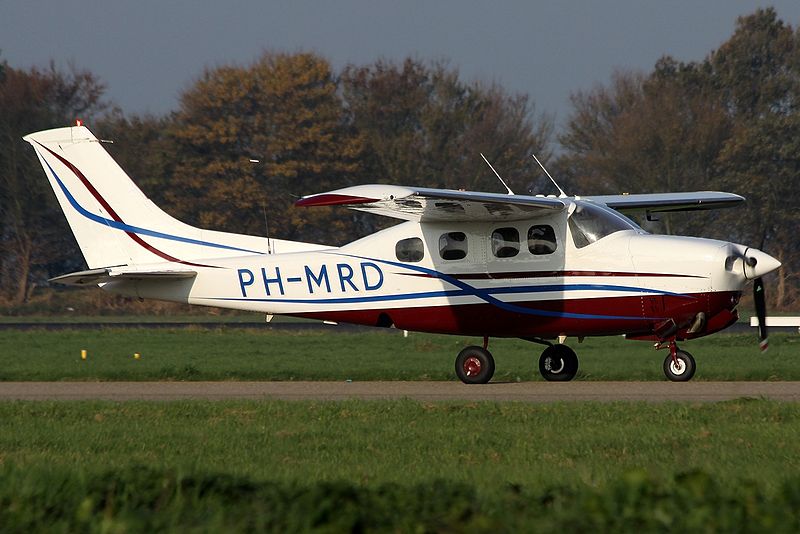
Also Consider
Mooney m22 (1967 - 1970).
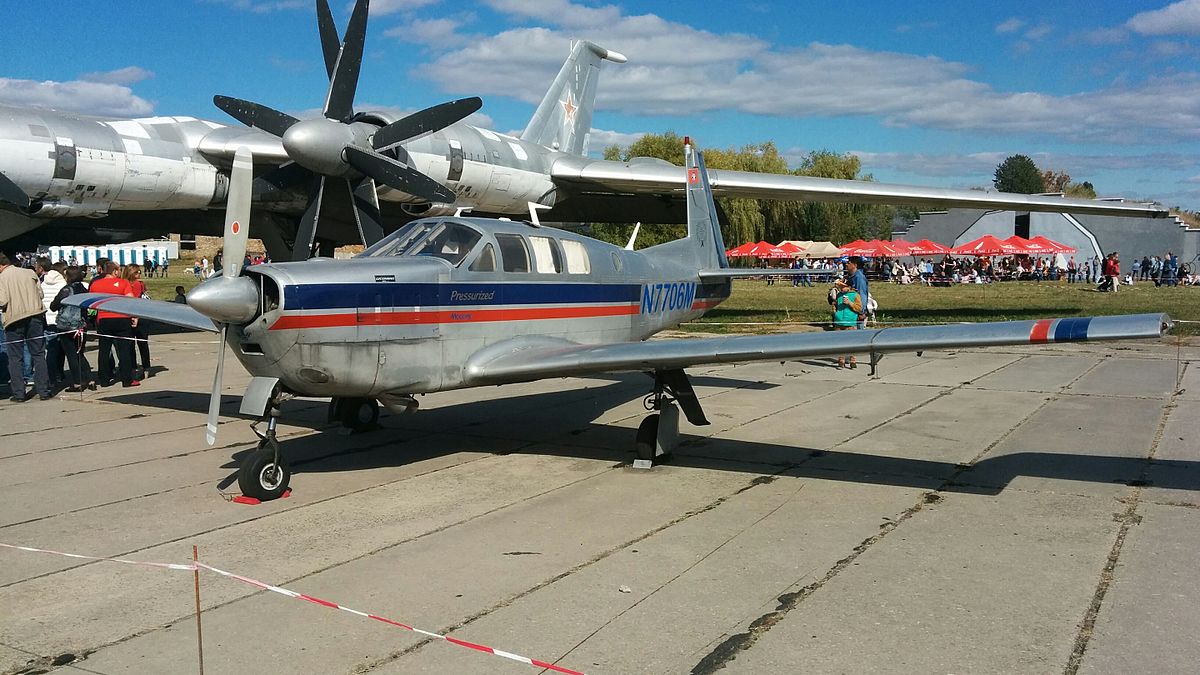
Typical Price: $175,505.00 Total Cost of Ownership: $26,544.58 Best Cruise: 200 KIAS ( 9 ) Best Range: 813 NM ( 152 ) Fuelburn: 20.0 GPH ( 3.0 )
Adjust ownership costs parameters
- Cost Per Mile
- Cost Per Hour
Leave Us Feedback PlanePhD is only as good as its community. Everyone wins if you share.
Please tell us: - Features that would be useful to you. - Aircraft data that you believe is inaccurate or have specific experiences. - Aircraft specific reviews and articles. Please send us your experiences on your aircraft. - Send us pictures of your plane. - Use this form or email to reach out to us: [email protected]
Thank you for contacting us!
One of our Planephd Experts will be in touch with you shortly.
- Shop Back Issues
- Aircraft For Sale
- Destinations
- Learn To Fly
Flying Brands
- The Ultimate FLYING Giveaway
- I.L.A.F.F.T. Podcast
- Modern Flying
- Helicopters
- The New Owner
- Avionics and Apps
- Instrument/accessories
- Retrofit avionics
- Oem avionics
- Portable/handhelds
- Aviation Gear
- Pilot supplies
- Aviation apps
- Flight School Guide
- Learn to Fly
- NIFA/SAFECON
- What A CFI Wants You To Know
- Flight planning
- I.L.A.F.F.T.
FLYING’s Air Compare: Cessna 206 vs. Cessna 210
A showdown between two high-wing utility haulers..

The earliest models of the 206 and 210 had significant overlap, visually and in terms of their capabilities. [Credit: Jim Stevenson]
- FLYING’s Air Compare: Cessna 206 vs. Cessna 210&body=https://www.flyingmag.com/flyings-air-compare-cessna-206-vs-cessna-210/&ui=2&tf=1" class="em">
The mid-1950s were an interesting time for Cessna. The taildragger era was drawing to a close, tricycle gear was taking over, and the marketing team was hard at work identifying and addressing gaps in their product offerings. The small trainer role was evolving from the 120 and 140 to the 150, and the light four-place role was evolving from the 170 to the 172 and 182. This left the question of what to do for the larger, higher-performance single-engine market.
After Cessna discontinued production of the big radial-powered 190 and 195 taildraggers in 1954, the company was left with the 180 and 185 to fill that category and saw there would be a market for large, capable piston singles with tricycle gear. Their solution? The retractable-gear 210, introduced in 1960, and the fixed-gear 206, introduced as the 205 in 1962, and in earnest as the 206 in 1964.
This Article First Appeared in FLYING Magazine

Over the course of their production runs, both the 206 and the 210 went through several evolutions. The 206 primarily saw minor changes, whereas the 210 saw significant revamps during its run. Production of both types was suspended in 1986, and only the 206 would be resurrected in more recent years. Today, the pre-1986 family of 206 and 210 series of aircraft provides a compelling blend of capability, comfort, and familiar, predictable flight characteristics.
As with any types of the vintage, each comes with a smattering of pitfalls and ownership challenges. As Cessna added features like turbocharging and pressurization, the airplanes became more challenging to own and maintain. Here, we explore the legacy 206 and the 210 and evaluate the capability of each while considering their respective pros and cons.

Design and Evolution
The earliest models of the 206 and 210 had significant overlap, visually and in terms of their capabilities. The two types diverged over time, but they share several fundamental similarities. Both used Cessna’s familiar high-wing, all-metal airframe design from the beginning. Both also offered similar dimensions and load-carrying capabilities, and both utilized six-cylinder Continental engines, with a “T” prefix indicating the presence of a turbocharger on models like the T206 and T210. The two types differed primarily in their landing gear, wings, and doors.
The 210 was introduced first as a 1960 model. The 1960 and 1961 models had four seats and were essentially 182s with retractable gear and 30 additional horsepower. 1962 brought rear windows and a 4 inches wider cabin. The 1962 to 1966 210s are essentially retractable-gear 206s with less available space in the back because of the main gear wells in the aft cabin.

In 1964, a third row of seats became available as an option. These initial seats were diminutive affairs with backrests that unfolded out of the raised baggage area floor. Most owners consider these to be most suitable for small adults and children. Performance-wise, Cessna upgraded the engine from the 260 hp IO-470 to the 285 hp IO-520, and the horizontal stabilizer was increased in span by 8 inches, improving pitch authority when landing with a forward CG.
The 210 lost its wing struts in 1967 when the strutless cantilever wing made its first appearance. Three years later, a switch to more compact tubular steel landing gear provided more space in the aft cabin, enabling full-sized seats to be used in the third row.
The most significant change during the cantilever-wing era was the addition of the P210, with “P” denoting cabin pressurization. Easily the most complex version of the 210, the pressurization provided comfort and capability during longer trips. With a relatively low 3.35 psi differential, however, the cabin altitude can easily exceed 10,000 feet, so many owners still utilize oxygen. Nevertheless, the pressurization provides a notably quieter, more comfortable cabin.
The Cessna 205, produced during the 1963 and 1964 model years, is essentially a fixed-gear 210. Because there was no need for bays to house the retracted main gear, the aft floor was flat and sported full-sized seats in the third row. The bulge in the cowl remains, however, making the 205 difficult to distinguish from a 210 visually.
With fixed landing gear, the 206 is simpler to operate, insure, and maintain than the 210. It was introduced in 1964 and took over the fixed-gear duties from the 205. As it was optimized for transporting people and cargo, cruise speed took a backseat to basic economy and reliability. Floats, skis, and belly pods for additional cargo capacity were available options. Legacy 206s are available in two versions: passenger, indicated by a “P” prefix, and utility, indicated by a “U” prefix.
The passenger-biased P206 models provide three separate entry points to the cabin. Each front seat has its own door, and a third smaller door provides access to the left-side back seat. Opinions vary based on spryness and flexibility, but one P206 owner with whom we spoke describes this rear door as somewhat more difficult to utilize than that of a Cessna 150. The door lacks a footrest to assist ingress and egress, and the door opening is relatively small. For many, it’s a feature best utilized for children and baggage.
For owners interested in hauling larger cargo or simply desiring easier access to the aft half of the cabin, the U206 provides large double “clamshell” doors on the right side of the fuselage. So massive are these doors that passengers can easily board both the second and third row of seats.

The ease of entry and egress of the U206’s double doors strongly appeals to owners who regularly transport elderly or disabled passengers, and thanks to the low sill height, outsized cargo is easily loaded and unloaded. A supplemental type certificate (STC)available from Wipaire allows for the installation of a right-side front door.
Compared to the 210, the 206 line saw far fewer changes during its production, the design remaining relatively consistent from year to year. One notable change came in 1968 when the horizontal stabilizer was increased in span for additional pitch authority at forward CGs. The P206 was discontinued in 1971,leaving the U206 as the sole version in production.

Market Snapshot
A recent survey of 206 and 210 variants listed for sale on six of the most popular online classified sites at the time of this writing provides some interesting takeaways.
Most notable is the scarcity of 205s and 206s on the market. This supports the chatter among owners that charter operators—particularly those in Alaska—snatch up many examples for their fleets. With only 14 listed for sale at the time of this writing, the fixed-gear variants appear to be in far higher demand than the 210s.
Additionally, the median number of airframe hours among the 206s represented is notably higher than the 210s, further bolstering the claims that the type sees heavy use in commercial operations. While regular use can be a good thing for the health of an airplane and especially an engine, owners advise using caution when considering a 206 that has been used commercially. The life of a cargo airplane can be harsh. Many have led hard lives and have been kept outdoors for decades, whereas their privately-owned counterparts are more likely to have been babied by doting owners and kept in climate-controlled hangars.
The higher median price of the 206 also suggests an overall preference in the market for fixed landing gear. The cost to maintain the retractable gear of the 210 family is not inconsequential. Neither is the amount of time and effort required to develop a thorough understanding of the components involved and closely monitor the entire system’s health. Add increased insurance premiums to the list of retractable gear concerns, and for most, it would take a significant pay-off to absorb the costs involved.
Fortunately, there are indeed some payoffs at play.From the very beginning, cruise speed has been one of them. At the same power setting, an earlier 210 with wing struts cruises approximately 25 mph faster than an equivalent fixed-gear 206. Alternatively, one can select a lower power setting and enjoy lower fuel burn due to decreased drag.
However, reduced drag isn’t enough to make up for the aforementioned higher cost of ownership, and this is evident in pricing. With asking prices of normally-aspirated 210s hovering at less than half the price of comparable 206s, buyers in the current market seem to place higher value on the simplicity, reliability, and lower operational cost of the 206 versus the speed and performance of the 210. For potential buyers regularly hauling people and cargo, the improved cabin access likely plays a part, as well.
With fewer than 600 examples built, Cessna 205s are relatively scarce and can go unnoticed. Like the Cessna 175, fewer people know what they are, so fewer people think to search for them on classified sites. For this reason, it’s not uncommon to find a 205 lurking deep in the listings that others have yet to discover. Presently, only 172 examples remain active on the FAA registry, and only two were listed among the major aircraft classified sites surveyed at the time of this writing.
Flight Characteristics
Speak with 206 and 210 owners, and their most noteworthy takeaway is just how unnoteworthy they found their transitions into the types. With relatively consistent operation and handling qualities across the Cessna model line, owners reported virtually no red flags or concerns involved in the transition.

One owner progressed from a 172 to a 182 modified with a 285 horsepower upgrade, and finally into his turbo 206. He felt that the transition from the 172 to the 182 was far more demanding than the transition from the 182 to the 206. Other owners echo this sentiment, describing the 206 as nothing more than a slightly larger 182.
Both the 206 and 210 provide excellent IFR platforms. The overall stability requires little effort on the part of the pilot to maintain headings and altitudes, and eases approaches as well. Handling and stability remain relatively consistent, whether light or heavy. A light, unloaded example can be something of a hot rod when it comes to acceleration and climb performance. But even loaded to maximum takeoff weight, the books indicate a 210B requires only 1,210 feet to clear a 50-foot obstacle on takeoff, and a P206E requires only 1,800 feet.
In cruise, 206 owners report cruise speeds of around140 to 150 mph while burning around 13 to 14 gallons per hour. The 210s vary based on the wing and presence of main landing gear doors, which can be removed to simplify maintenance, but a strutted 210 will cruise in the neighborhood of 180 mph, with turbocharged versions capable of more.
When it comes to approaches and landings, a 206 or 210 owner will again invariably describe their airplane as “a big 182.’’ Those we surveyed reported final approach speeds of 85 to 90 mph and honestlanding characteristics, with only one caveat—elevator authority at light weights. With only one or two individuals on board, especially with full flaps, it can be difficult to flare. Using trim can alleviate the need for back pressure on the yoke, but one must be prepared to retrim quickly in the event of a go-around.
While this is generally just a nuisance for most 206s and 210s, it’s a more serious concern with models that came from the factory with smaller horizontal stabilizers—pre-1964 for the 210, and pre-1968 for the 206. Owners of these models will commonly keep weight in the aft baggage area to alleviate the issue and prevent running out of elevator authority in the flare.
Overall, owners cherish the predictable, familiar flight characteristics of both models. They enjoy the rock-solid stability in cruise, particularly for instrument work. With the exception of the forward CG when light, they report no red flags or items of concern,describing the airplanes as honest and straightforward.
“When the Super Skywagon Debuted…

In the December 1964 issue of FLYING , we compared the new Cessna Super Skywagon 206 to the then- current Cessna Centurion 210B, noting what the company had leveraged to make the new sibling a real change from its older sister.

“This new Super Skywagon shares its wing with the Model 210D Centurion, but is approved for an allowable gross weight of 3,300 pounds, fully 200 pounds more than its faster sister, and as a floatplane it goes to a whopping 3,500-pound gross. It is a new wing, more gull-shaped in its planform. The flaps extend a full 18.9 feet, and are electrically operated Fowler type and contribute to a marked increase to lift when extended. Shortening the ailerons was made necessary by the broad span of the flaps, but this has been offset by increasing their chord. They are Frise type with hinges at one -third chord position for reduced control forces. The wings are manufactured to accept Cessna Nav-O-Matic autopilots.
“The tail group, similar to that used on the 210D, is of adequate size to control the forces created by the oversized flaps. At no time during our flight was a lack of elevator control evidenced…”
As the legacy 206 and 210 fleet consists of aircraft now at least 37 and up to 63 years old, the primary concern of ownership is the age of the airframe and its components. Corrosion is a concern with most aircraft of this age, and it pays to do some digging to determine where it has spent its life. An airplane that has spent decades on the coast will likely present more airframe issues than one that has lived in the Arizona desert.
Beyond airframe corrosion, much of the discussion around owning and maintaining a 206 or a 210 will revolve around the retractable landing gear of the 210. While it isn’t something to be scared of, and while there are many very happy 210 owners, the system and its components demand respect. To ensure the gear will operate reliably, an owner must become something of a landing gear enthusiast, eagerly learning the intricacies and only permitting mechanics who are intimately familiar with 210 gear to work on it.

In general, the newer the 210, the more reliable the landing gear and easier to maintain. The first examples in 1960 and 1961 incorporated a complex hydraulic system with components that, should they fail, maybe impossible to source for significant lengths of time.Additionally, these early models are subject to an airworthiness directive (AD) that can require an owner to seek out equally scarce replacement parts.
Subsequent generations of the 210 incorporated better landing gear designs, such as the simplified 1970 model year and the 1972 model year that tran-sitioned to a far superior electro-hydraulic system. Best of all is the 1979 and newer gear design, which has proven remarkably reliable and trouble-free.
More than one owner has cautioned that the turbo engines have a habit of heating the engine compartment enough to significantly reduce the lifespan of cylinders and engine accessories, even when carefully monitoring the engine and using recommended power settings. While they appreciate the capability of the turbo, they question whether it’s worth the headache.
Some of the most significant concerns of the 210 are wing spar ADs that affect cantilever-winged (i.e.strutless) wings. These are one-time ADs that require an inspection of the spars and carry-through assembly. Should these components require replacement, the cost is steep at $20,000 or more for the necessary parts, excluding labor. But whether the components pass inspection or are ultimately replaced, you can forget these ADs once completed and documented.

Except for the spar ADs, both the 206 and 210 are generally unburdened with recurring ADs that plague other types, and maintenance comes down to routine annuals and the replacement of parts that wearout. The 206 owners with whom we spoke plan for a baseline figure of $2,000 to $3,000 for a typical, uneventful annual inspection with no surprises. Predictably, 210 owners report a higher baseline of around $3,000 to $5,000 for a similar annual.
The Cessna Pilot ’s Association is the go-to owner’s group for the 206 and 210, offering systems and procedures courses both online and in-person to educate owners. Those who have taken these courses rave about them, particularly one taught by Paul New at Tennessee Aircraft Services in Jackson, Tennessee, a de facto 210 expert. For around $1,000, owners are brought up to speed on the most recent issues encountered by others around the country.
Insurance expense can be a significant concern for the owner of any six-place airplane. For a few points of reference, a P206 owner with 146 hours total time and a hull value of $150,000 reported annual premiums of $3,800. On the other end of the spectrum, a P210 owner with thousands of hours of tactical fighter experience and a hull value of $327,000 reported an annual premium of $4,600 per year. Some owners have found a creative way to reduce their premiums. By removing the aft two seats, they can insure their airplanes asfour-place aircraft. By doing so, some saw reductions in insurance premiums as high as 30 to 40 percent.
When it comes to six-place piston singles without a new-aircraft price tag, there are only a handful of alternatives to the 206 and 210. The most direct competitors, both in terms of cost and capability, would be Piper Cherokee Six, Saratoga, and Lance. The Beechcraft Bonanza A36 is a well-loved option that comes with a premium price. And if useful load is less of a concern, certain Beechcraft Musketeers and Sierras are equipped with a third row of small seats primarily suitable for children.
Overall, the 206 and 210 offer a balanced set of strengths, including payload, speed, and range. Less quantifiable but perhaps equally important are the familiar handling and ease when transitioning from 172s and 182s. One of the more interesting aspects of the two types is the flexibility to shift the expense from acquisition to operation or vice-versa. The 206 commands a higher purchase price but costs less to maintain, while 210s can be had at a relative bargain provided the maintenance budget is increased.
Whichever model is selected, a buyer will undoubtedly appreciate the strengths of the type, and will enjoy a level of real-world capability matched by few other aircraft on the market.
This article was originally published in the February 2023 Issue 934 of FLYING .

More From Aircraft
This 1977 cessna a185f skywagon is a turnkey adventure machine and an ‘aircraftforsale’ top pick, this 1975 rockwell commander 112 is a stylish, sturdy ‘aircraftforsale’ top pick, testing the hardware after a usm retrofit, a first look at joby’s evtol future, we fly: diamond da62, honeywell developing software to reduce runway incursions, new to flying, already have an account.

The Most Produced Aircraft: What Is The Cessna 172's Cruise Speed?
The Cessna 172 Skyhawk is famous for being the most-produced aircraft of all time, with over 45,000 airframes built since the first rolled off the production line in 1956. This legendary general aviation light aircraft will go down in history as one of the most reliable, efficient, and versatile planes ever built, capable of performing all kinds of roles.
Interestingly, despite major advancements in technology and design since the 172 was released, the plane's cruise speed hasn't changed too much over the decades. Instead, upgrades to the aircraft have tended to boost its reliability, avionics, and safety. Nonetheless, modern Cessna 172 models are still almost 20% faster than the original, so some improvements have been made in this department.
Cessna 172 cruise speed
The current in-production model of the 172 series is the Cessna 172S Skyhawk SP, offering modern upgrades like a glass cockpit, Garmin G1000 NXi avionics suite and a 180-horsepower Lycoming IO-360-L2A engine. Compared to the previous model, the 172R, the 172S features an additional 20HP, and the Garmin G1000 suite comes as standard, among other tweaks.
As per Textron Aviation, the aircraft's maximum cruise speed is 124 knots (142 mph or 230 km/h), with a maximum range of 640 NM (1,185 km) and a climb rate of up to 730 fpm. However, this range can change depending on engine power, altitude, and weight of aircraft.
Discover more aviation news with Simple Flying.
Modest speed increases
As mentioned earlier, the Skyhawk's cruise speed has risen modestly over the decades, but improvements haven't been dramatic given the limitations of a single-engine piston aircraft. The first Cessna 172 model was fitted with a 145HP Continental O-300 engine before an upgrade to the Lycoming O-320 around a decade later.
According to 172guide , the first Cessna 172 had a cruise speed of 108 knots (132 mph or 212 km/h), which was gradually increased in future iterations:
- 172C (1962): Continental O-300-C - 114 knots at 7,000 ft altitude
- 172I (1968): Lycoming O-320-E2D - 114 knots at 9,000 ft altitude
- 172N (1979): Lycoming O-320-H2AD - 122 knots at 8,000 ft altitude
Let's compare some of the specs of the first Cessna 172 with the in-production 172S:
A Look At Why The Cessna 172 Is The Best Selling Aircraft In The World
Against the competition.
The 172 is well ahead of other trainers in terms of aircraft built and sold. However, when looking at its specs compared to those of its rivals, it doesn't outshine them in all departments. In fact, if we look at cruise speed alone (at 75% engine power), it is sometimes slightly slower than most of its counterparts.
Piper PA-28 Cherokee
Take the Piper PA-28 Cherokee, for example, which is generally considered the main rival to the Cessna 172 series. Entering service in the early 1960s, the PA-28 initially offered a higher cruise speed of over 120 knots, although the current in-production Piper's have a similar cruise speed to the Cessna 172S.
Diamond DA40
The Diamond DA40 is, without a doubt, a faster aircraft than the 172, with an initial cruise speed of 145 knots when it came out in 1997. The most up-to-date variant - the DA40 NG - is powered by a 168 hp Austro Engine AE300, which offers a cruise speed of 154 knots, as well as a higher service ceiling of 16,000ft.
Beechcraft Musketeer
The Beechcraft Musketeer is another popular trainer aircraft and one of the few that is slower than the 172. Take the Beechcraft Musketeer Sport II, for example, which has a cruise speed of 108 knots, well below the 172S' 124 knots, or the Musketeer Custom II, which offers a cruise speed of 102 knots.
Comparing the 172 and 182
Simple Flying recently took a deep dive into the differences between the 172 Skyhawk and the larger Cessna 182 Skylane , another popular trainer and general aviation aircraft. The Skylane is Cessna's second most popular aircraft still in production behind the 172 and a feasible alternative for flight schools and private owners.
The 182 features a more powerful Lycoming IO-540-AB1A5 engine, giving it a cruise speed of 145 knots - on top of this, its extra fuel capacity gives it almost 50% more range than the 172 at 930 NM.
A training favorite
The Cessna 172's ease of operation makes it a clear favorite for student pilots, and you can find a Cessna 172 at just about every flight school in the world. Cessna estimates an average of 75 flight hours to earn a private license.
5 Reasons The Cessna 172 Is A Favorite With Flight Training Schools
The plane also boasts exceptional reliability and an immaculate safety record, with a fatality rate of 0.56 fatal crashes per 100,000 flying hours, which is less than half the industry standard of 1.2-1.4 per 100,000.
Have you ever flown a Cessna 172? Let us know your stories in the comments.
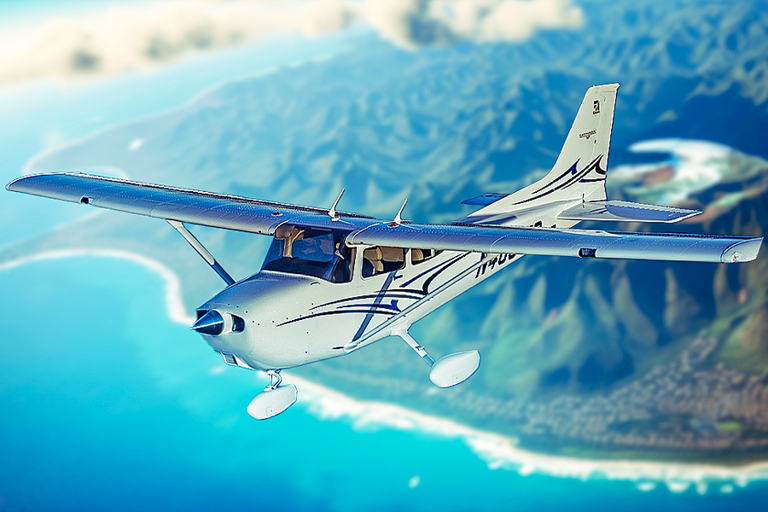

IMAGES
VIDEO
COMMENTS
The system pumped up the cabin by 3.37 psi, allowing a cabin altitude of 10,000 feet when the airplane was cruising at 20,000 feet. While this did introduce a greater level of complexity, it also made a dramatic improvement to the airplane’s comfort and safety.
SPEC SHEET. O&N Silver Eagle. Powerplant | Rolls-Royce 250-B17F 450 shp (5 minutes) Length | 28 ft 2 in Height | 9 ft 8 in Wingspan | 39 ft 2 in Seats | 6 Max takeoff weight | 4,000 lb Takeoff distance over 50-ft obstacle (sea level) | 2,200 ft Max cruise speed | 215 kt Range | 900 nm.
(as of June 1, 2022): $279,143. Performance specifications. Horsepower: 1 x 450 HP. Best Cruise Speed: 215 KIAS. Best Range (i): 1,065 NM. Fuel Burn @ 75%: 24.0 GPH. Stall Speed: 59 KIAS. Rate of climb: 2,200 FPM. Ceiling: 23,000 FT. Takeoff distance: 600 FT. Landing distance:
Maximum Speeds. Never Exceed Speed, (Vne) 175-225kts (200-260mph) Maximum structural cruise speed 170-210kts (Vno)* (195-240mph) Maximum demonstrated crosswind component** Maximum manoeuvering speed (Va) *May not be exceeded unless in smooth air conditions **Late models only. (top red line) , (top of green arc)
Turbonormalized P210: Fast, Efficient, Quieter. Ownership. Aircraft Upgrades. Features. features_old. Turbonormalized P210: Fast, Efficient, Quieter. Vitatoe Aviation hangs an easy-breathing, cool-running, turbonormalized IO-550 on a P210, giving it a strong rate of climb and turbine speed at altitude. By. Editorial Staff. -
Crew: 1. Passengers: 5. Operating Weights. Max T/O Weight: 4000 Lb. Max Landing Weight: 3850 Lb. Empty Weight: 2481 Lb. Fuel Capacity: 90 gal Lb. Range. Normal Range: 661 nm. Max Range: 900 nm. Service Ceiling: 27000 ft. Distances. Takeoff Distance: 1300 ft. Balanced Field Length: 2160 ft. Landing Distance: 765 ft. Performance.
As youd expect from the higher power, cruise speeds are higher, too, when compared to the Continental-powered P210. Owners tell us they fly the piston version at 175 to 190 knots true, but the Silver Eagle bores along on 210 to 215 knots.
Best Cruise Speed: 191 KIAS. Best Range (i): 661 NM. Fuel Burn @ 75%: 17.0 GPH. Stall Speed: 58 KIAS. Rate of climb: 945 FPM. Ceiling: 23,000 FT. Takeoff distance: 1,300 FT. Landing distance: 765 FT. Takeoff distance over 50ft obstacle: 2,160 FT.
In cruise, 206 owners report cruise speeds of around140 to 150 mph while burning around 13 to 14 gallons per hour.
Cessna 172 cruise speed . The current in-production model of the 172 series is the Cessna 172S Skyhawk SP, offering modern upgrades like a glass cockpit, Garmin G1000 NXi avionics suite and a 180 ...